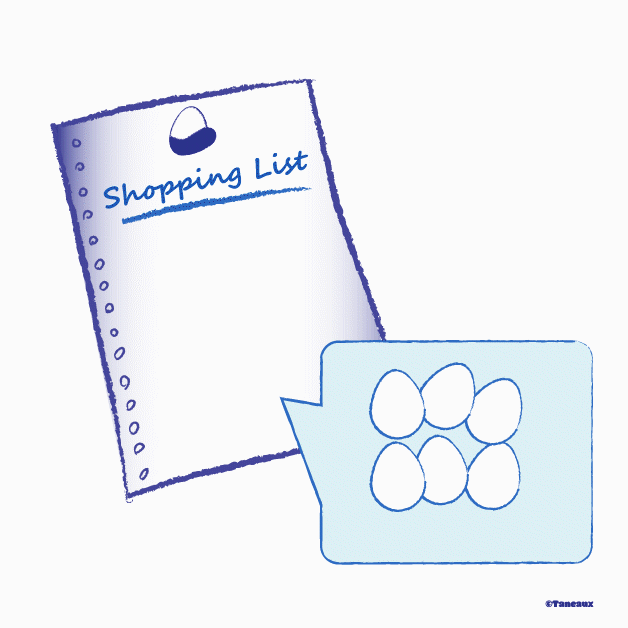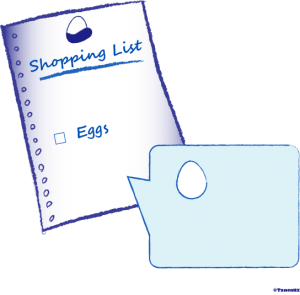When do you make your shopping lists? Right before making a trip to the supermarket? I find it a pain to go through the refrigerator, pantry and cupboards, checking to see what needs to be replenished before each trip. When categorizing what needs to be purchased, I used to sort by usage area, such as kitchen, toilet, etc. I realized that there might be a better way to categorize by regular vs irregular items, as it will help see the different processes behind it.
Regular Items
Regular items are things that your family needs a constant stock of, such as milk, eggs, breakfast cereal, dishwasher detergent, toilet paper, pet food, etc. If you are a risk-averse person like me, you probably have sufficient inventory of most of these items to last your family for weeks (or months). Living in a disaster-prone area, you can’t be too careful!
Let’s define “Running Out” as the state of an item where it is estimated that there is not enough available to last until the next-next shopping trip. The basic process would be to update the Shopping List when you find the inventory is low or “Running Out.” If you are using Google Keep, you can uncheck the box on the item to return the item to the list.
You can categorize further into “Perishable” Items and “Non-Perishable” Items to differentiate how the inventory is monitored.
Perishable Regular Items

Here, we will define “Perishable” items as those with a relatively short shelf life, such as milk, eggs, etc. These are relatively easy to monitor as you will constantly be seeing them. When you find an item to be “Running Out,” add these to your shopping list.
Non-Perishable Regular Items
“Non-Perishable” regular items are those that can be kept in the pantry or freezer for a relatively long period of time, such as salt, breakfast cereal, frozen pie sheets, flour, dishwasher detergent, toilet paper.
We usually have these items in two or more locations — convenient location for current use and storage location for inventory.
An example, salt. We have a salt shaker on the dining table and a moisture-proof container of salt in the pantry. The container for the current use should be convenient to use and placed with accessibility in mind. It also is good to have these containers be transparent so that it is obvious when the contents are low. When the current contents are low, replenish them from the stock in the pantry. When you find that the pantry levels are getting low, add them to your shopping list.
An additional benefit of having sufficient inventory is that you can purchase these items in bulk when you find a good deal.
Irregular Items
Irregular items are needed for a one-time event, such as a birthday cake or ingredients for a particular menu. They are usually identified when you plan for an event or a meal. These events can be special, such as a birthday celebration or picnic, or as simple as a special meal.
Rather than list up the items right before your shopping trip, it is best to do it when you are in the planning phase of these events when you are not as rushed.
When planning for a special meal, try to keep in mind the following types of ingredients:
| Item Type | Example | Action |
|---|---|---|
| Special items that you don’t regularly keep in stock | zucchini | Add to List |
| Regular items that you keep in stock (to use in large quantities) | 6 eggs for a cake | Add to List |
| Regular items that you keep in stock (to use in small quantities) | salt | Ignore |
Summary
Split up the updating timing of the shopping list by type of item, as they require different processes:
- Regular – Perishables
- Regular – Non-perishables
- Irregular


